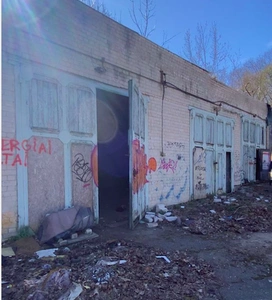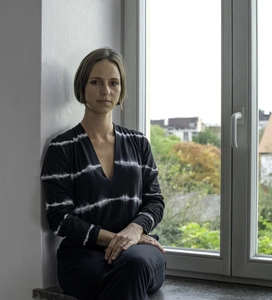Sine cūrā: A Future In What We Already Have
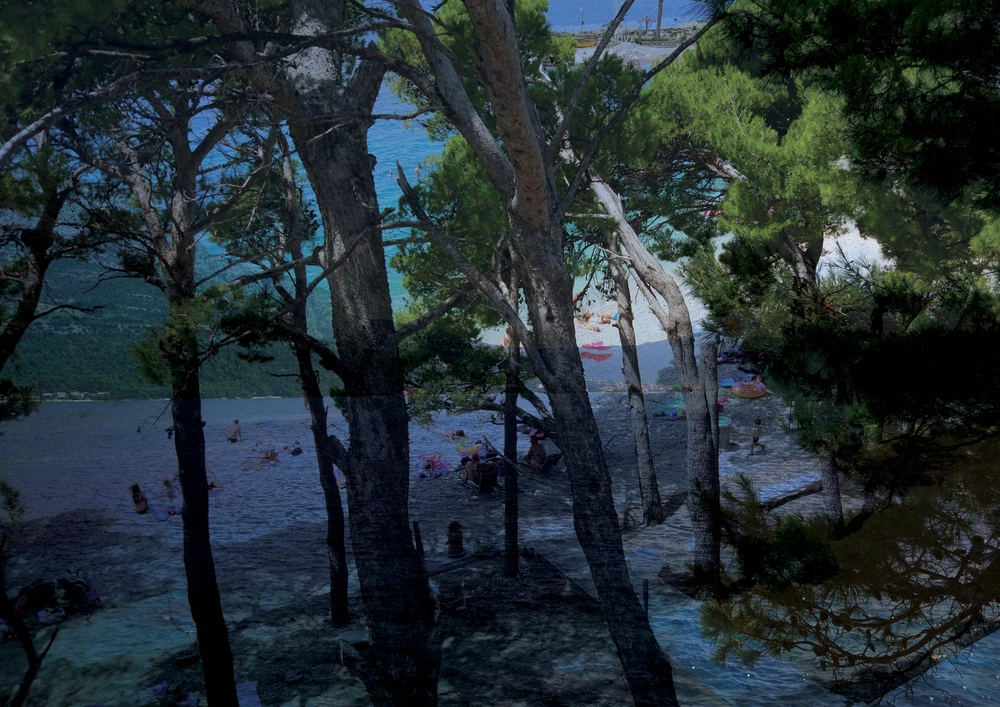
The DAI-SAI Sine cūrā: A Future In What We Already Have programme continues the exploration of critical architectural heritage and transformation of material and immaterial environments from “spaces of common disease” into places of “common healing”.
At a time when the traditional understanding of care for architectural icons is becoming a universal and ever-expanding professional question, we ask ourselves: how can we build strategies of care? As not everything worth preserving can be preserved as an icon, how can we expand the concepts and pursuits of care that are meaningful and sustainable to both the local and the global communities? How may such buildings become something more for their communities, or for people who care about them?
The programme started under the title From Care to Cure and Back, focusing on The Children’s Maritime Health Resort of Military Insured Persons in Krvavica, a modernist masterpiece built by the enigmatic Croatian architect Rikard Marasović, and communities around it, through investigation in film medium. While the complex sparks nostalgia and even international architectural interest (it was included in MoMA’s 2018 exhibition Toward a Concrete Utopia Architecture in Yugoslavia, 1948–1980), its contemporary and local realities are tied to multiple layers of current uses, legalities, ownership questions and societal tendencies that reach far beyond purely architectural appreciation. This year, within the LINA programme, the cinematic production of architectural knowledge will be joined with experimental practices of in-situ installations, peripatetic storytelling and community gathering, with the emphasis on reinventing collectivity, performativity and materiality, under the title The Architecture of Cure.
Sine cūrā: A Future In What We Already Have programme in 2025 is conceived to curate and exhibit a postdisciplinary interest in critical architectural heritage, which has turned into a multifaceted front of projects in the case of The Children’s Maritime Health Resort in Krvavica. Moreover, we seek to combine learnings and collect examples of the plurality related to acts of care in a discursive exhibition and its publication, where curiosity is sparked by contemporary communities and their imaginaries, together with a future in what we already have.
Programme
28 - 30 Nov 2024, DAI – SAI Gallery, Pula
(within “Community Architecture” DAYS OF ARCHITECTURE IN ISTRIA programme)
28 Nov 2024, Thursday
18:00 - 18:30
“New Local: Examples from Finland”
Lecture presentation by Mika Savela (TAIKE, Helsinki)
18:45 - 20:00
“Community Architecture Here and Now: Pula, Višnjan, Rijeka, Krvavica”
Discussion moderated by Ana Dana Beroš, and visual presentation with:
• Breda Bizjak (DAI-SAI)
• Jasmina Bašić (DAI-SAI)
• Marin Nižić (Urbani Separe, Rijeka)
• Tina Divić (mART, KuK, Makarska, Krvavica)
29 Nov 2024, Friday
10:00 – 13:00
“Acts From Sites of Care” Editorial Workshop
Facilitators: Mika Savela and Ana Dana Beroš
18:00 – 20:00
“Sine cūrā: A Future In What We Already Have”
Public Talks with LINA Fellows:
Moderators: Ana Jeinić (IZK, TU Graz) and Ana Dana Beroš
• Rajna Avramova (Vienna)
• girlscanscan collective (Budapest)
• Liisa Ryynänen (Helsinki)
• Loris Perillo and Andrea Arcese (Basel, Rome)
20:00
“Sine cūrā: A Future In What We Already Have”
Exhibition Featuring: Rebeka Bratož Gornik, Tina Divić, Matija Kralj Štefanić, Joaquin Mora et al.
and
“Periple Duet II”
Publication presentation in collaboration with Trienal de Arquitectura de Lisboa, featuring Johanna Musch and Wit[h]nessing
30 Nov 2024, Saturday
10:00 – 12:00
“Rijeka’s Walk Through Pula”
A peripatetic program connecting two port cities, Rijeka and Pula, curated by Urbani Separe.
https://www.urbanisepare.org/homepage/
Summary
From November 28th to November 30th, the programme Sine cūrā: A Future In What We Already Have took place in Pula, featuring talks and presentations on practices of creating "architectures of community" and critical architectural heritage in Croatia and Europe, the launch of publications, an experimental publishing workshop, the opening of a documentary-exhibition installation, and an urban walk, gathering numerous Croatian and international authors from the fields of architecture, visual arts, and urban and spatial practices.
As part of the pan-European LINA (Learn, Interact and Network in Architecture) platform, the programme was hosted at DAI-SAI Gallery, Smareglina 1, in Pula, encompassing discussions with architects and artists on creating "architectures of community," a presentation of a publication showcasing examples of such communities from Finland, the opening of the documentary- exhibition installation Sine cūrā: A Future In What We Already Have, an experimental publishing workshop, presentations and conversations by young LINA authors on critical architectural heritage, and a “Rijeka Walk Through Pula.”
The Sine cūrā: A Future In What We Already Have programme, organized by the Istrian Architects' Association (DAI-SAI), continues a multi-year research into critical architectural heritage with the aim of transforming the material and immaterial environment from "spaces of collective illness" into "sites of common healing."
This initiative began in 2023 under the title From Care to Cure and Back, focusing on the Children’s Health Resort in Krvavica, a masterpiece of the enigmatic modernist architect Rikard Marasović from 1965. Through the research medium of film and community-engaged methods, the programme reimagined the architecture in question, envisioning alternative conceptions of social interaction and spatial organization.
Films by LINA authors were screened at prestigious architectural film festivals, from Rotterdam to Helsinki, and during the Pula programme, the film The Sound That Remains by Joaquín Moré was simultaneously shown at ArqFilmFest, the architectural film festival in Santiago de Chile. The Architecture of Cure programme already brought together a "summer school" earlier this year, gathering a new generation of young LINA platform authors. In collaboration with the Lisbon Architecture Triennale and based on Periple Duet II — a "residency on the move" connecting cities where the artists live to Lisbon and the abandoned Children's Resort in Krvavica — the Istrian Architects' Association (DAI-SAI) published a book that will be presented during the autumn programme in Pula.
During their trans-European journeys to Krvavica, exclusively undertaken by land, the residents
focused on exploring time as a tool of care, the exhaustion at its boundaries, and fiction as a tool for
healing. In addition, a May Day Community Festival was organized at the Children’s Health Resort
in Krvavica, bringing together young artists and the local community.
The autumn programme Sine cūrā: A Future In What We Already Have, held as part of this year’s Architecture Days in Istria, once again centers on the contemporary and local reality of the Children’s Resort in Krvavica, entangled in multiple layers of current and/or illegal uses, questions
2of ownership, and societal trends that extend far beyond the realm of architectural appreciation.
Although the "mysterious object in the pine forest" evokes nostalgia and even attracts international
architectural interest (e.g., the Children's Resort in Krvavica was included in the MoMA exhibition
Toward a Concrete Utopia: Architecture in Yugoslavia, 1948–1980 in 2018), even after years of
transdisciplinary community work, the questions of how to build strategies of care and healing for
Krvavica remain open.
Nevertheless, there is an understanding of the necessity of approaching architectural care as a
continuous process, and of forms of care becoming everyday practices, survival tactics — and ways
of imagining a better future.
The panel discussion Architecture of Community Here and Now: Pula, Višnjan, Rijeka, Krvavica
emphasized the role of communities in preserving built heritage, developing cities, and
architecture’s activist role — its ties to social equity and environmental justice.
The panel featured architects Jasmina Bašić (DAI-SAI), architect and researcher Mauro Sirotnjak
(Pravo na grad), and members of the association for promoting urban quality of life — Urbani
separe: Marin Nižić, Tanja Blašković, and Mara Prpić.
As the questions of caring for architectural icons become universal, the publishing workshop Acts
from Sites of Care, led by Mika Savela, raised key questions: How can we develop strategies of care
that transcend traditional ideas of architectural preservation? How can we extend care in ways that
are meaningful and sustainable for both local and global communities? How can architecture be
transformed into something more for its communities?
The workshop and the documentary-exhibition installation Sine cūrā: A Future In What We
Already Have served as a starting point for the work on a new publication that will bring together
long-term research and artistic production related to the Children's Resort in Krvavica, aligned with
DAI-SAI’s publishing tradition and the experimental series Publishing Acts.
Talks by the new generation of LINA authors critically reexamined traditional paradigms of
architectural conservation, studied cases of preserving modernist heritage in the former Eastern
Bloc, employed interdisciplinary methodologies connecting housing and exhibition projects, and
explored alternative spatial practices challenging power structures and dominant architectural
theories.
1. Liisa Ryynänen, in her presentation How to Dismantle the Master's House Using the
Master's Tools?, discussed heritage evaluation criteria rooted in national ideals and how
traditional tools of architectural research can be reinterpreted to create new knowledge.
girlscanscan collective (Lilla Kammermann, Lilla Luca Varga), in Tripping on Modernist
Monuments: A Panorama of Ukraine, Moldova, Romania, Germany and Hungary,
showcased how local initiatives balance the preservation of modernist heritage while
addressing the social impacts of late modern objects on their communities.
2. Loris L. Perillo and Andrea Arcese, in From Space to Environment: Elementary Notes on
Housing and Displaying, analyzed the spatial qualities of modernist housing and interpreted
exhibition-making as a contemporary architectural tool, exploring alternative methodologies
for transforming housing spaces through curatorial processes.
3. Rajna Avramova, in Uncanny Spatialities and Minor Architectures, used speculative
exercises in "minor architecture" to explore literary fiction as a medium for revealing the
3non-architectural nature of spaces, viewing each place as an assembly of smaller, situated
practices in continuous becoming.
The presentations offered critical insights into how existing tools and practices can be transformed
into new ways of valuing, caring for, and engaging with the built environment.
Finally, the programme concluded with the Rijeka Walk Through Pula, designed by the Urbani
separe organization from Rijeka (https://www.urbanisepare.org/homepage/). This urban exploration
invited participants to discover the links and contrasts between the seemingly similar cities of Pula
and Rijeka. Using locations in Pula’s city center as a starting point, the walk sparked discussions on
green and blue infrastructures, touristification and commercialization of urban space, climate
change, the strengths and weaknesses of local communities, and various strategies to address these pressing issues.
Collaboration with LINA Fellows
Through DAI-SAI’s engagement with LINA fellows, a sustained and critical dialogue unfolded— beginning with the intensive days in Pula (see programme: https://cure-care.org/sina-cura) and continuing through ongoing digital collaboration. This collaboration culminated in contributions to the Planet Krvavica Prereaders digital publication, based on an editorial workshop that foregrounded the complexities of community-driven spatial practices. Fellows engaged in collective discussions, they have critically presented ideas to a range of critics, that examined how political narratives and post-socialist transformations shape the fate of modernist structures, exploring architecture as both a site of memory and a terrain of resistance.
Within these exchanges, they interrogated how language—reshaped by institutional and neoliberal forces—can obscure or reclaim meaning in the built environment. The editorial process demanded a meticulous approach, as questions of care, value, and spatial justice emerged at the intersection of design, activism, and storytelling. Working closely with us, fellows explored how salvage practices and informal spatial interventions function not just as repairs, but as powerful symbolic acts of resistance to commodification and systemic erasure.
These dialogues also brought into focus the role of grassroots and non-governmental initiatives in confronting state neglect, challenging dominant heritage discourses, interrogating how terms like "heritage" or "value" are constructed, translated, and politicized across contexts. and offering alternative models for architectural care. Practices centered on the reuse of discarded building materials and attention to so-called "low-status" architecture became case studies for rethinking urban transformation. Rather than assuming the architect as a neutral expert, the contributions positioned them as narrator, mediator, and translator—working across ruins, borders, and contested narratives.
Across these engagements, the role of architectural practice was reframed as deeply political: a form of resistance, a mode of collective narration, and a critical tool for reimagining how we care for our shared spatial futures.
Related fellows
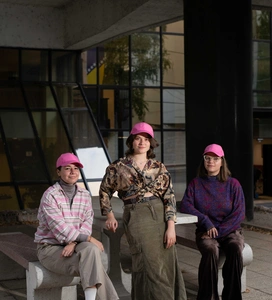
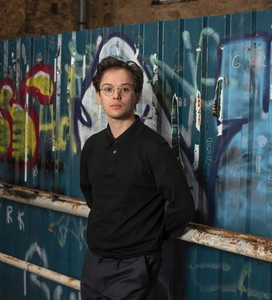
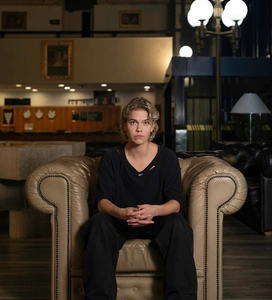
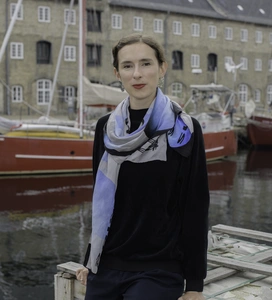
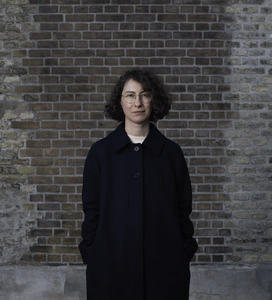
![Wit[h]nessing](/media/cache/ae/86/ae8661b4ccd702f156ba8e750107f93c.webp)
